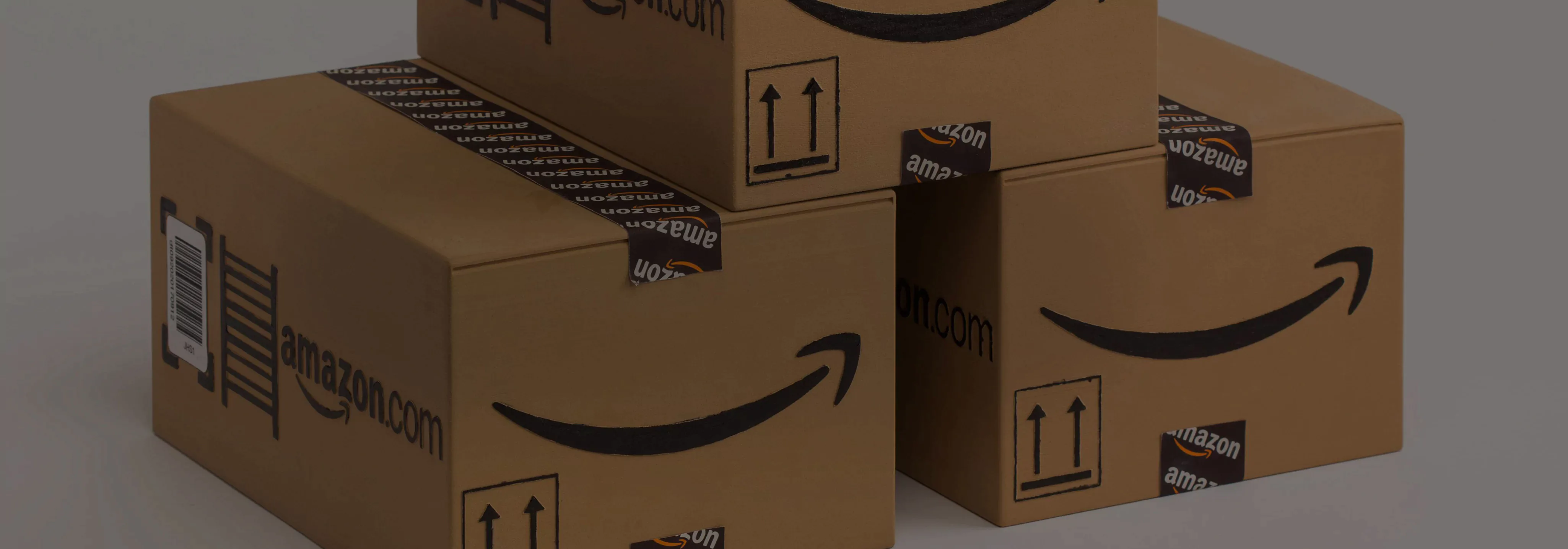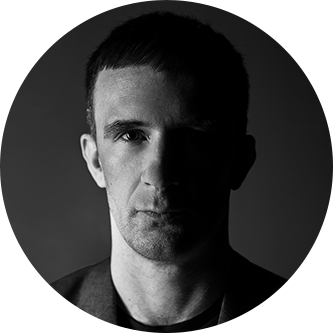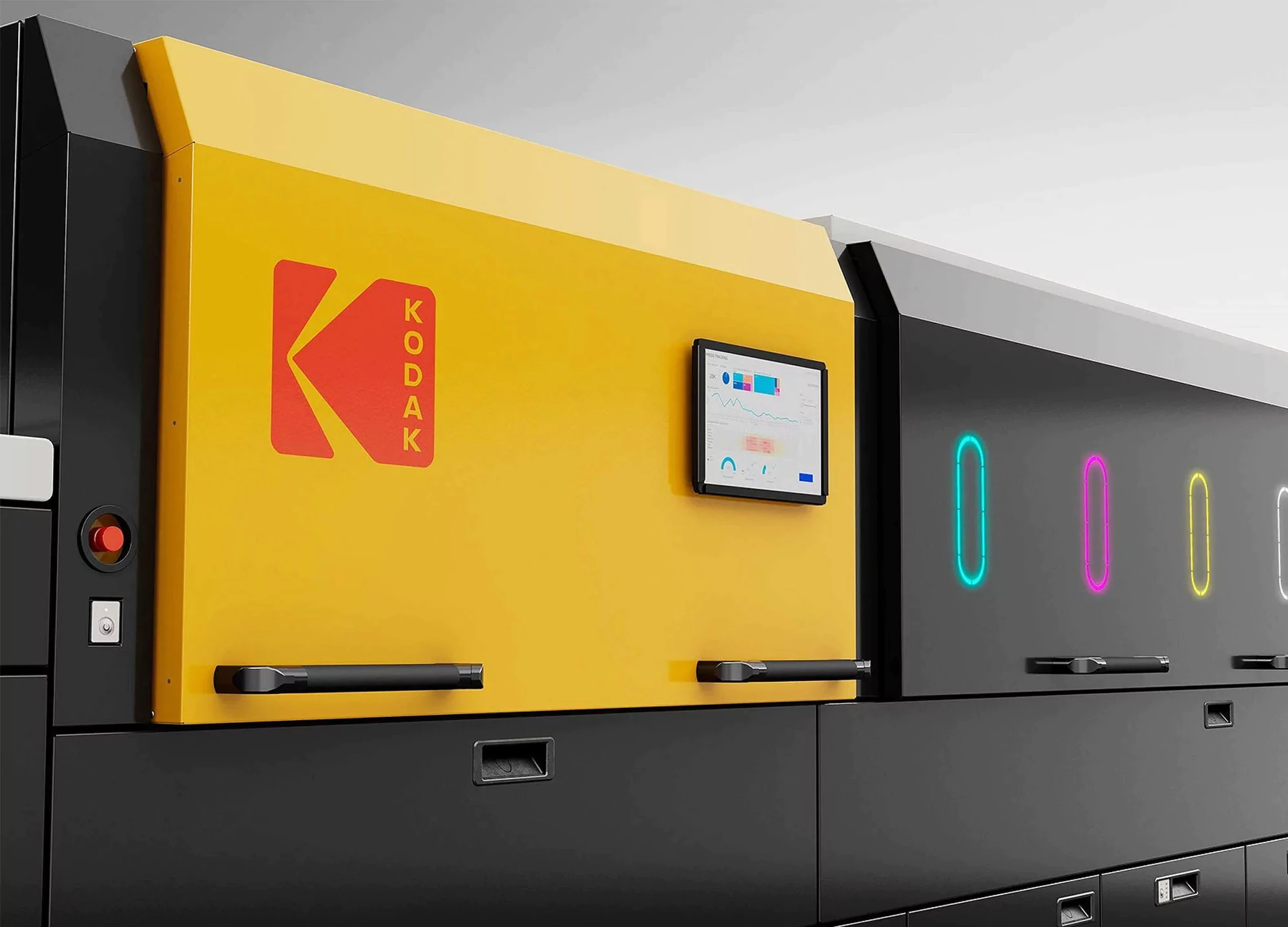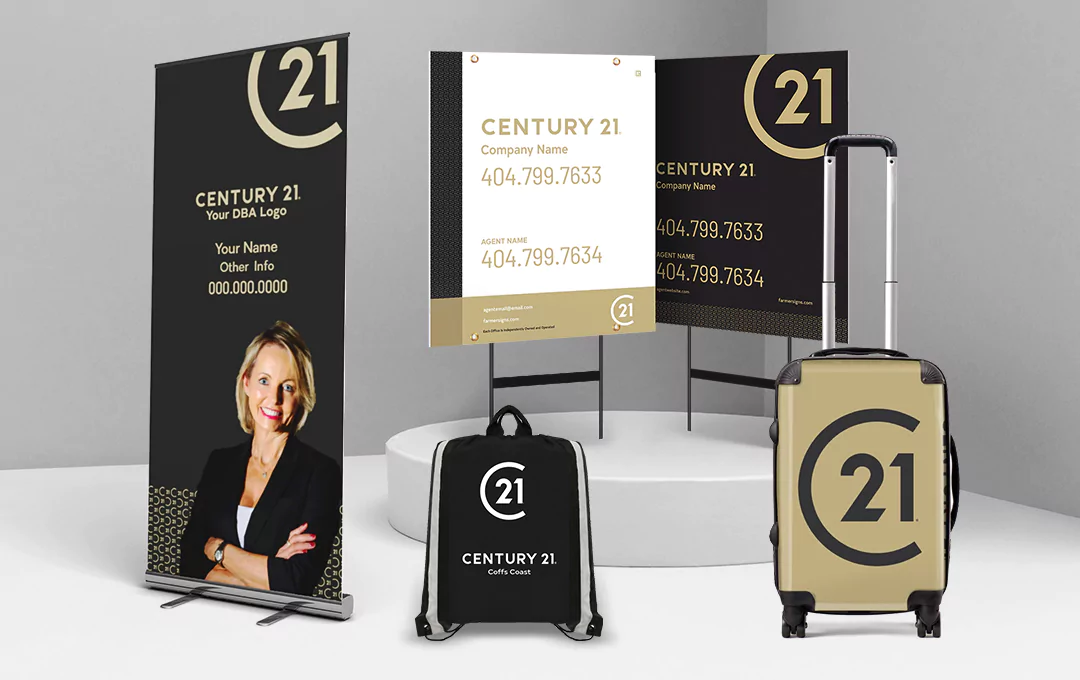As populations and sectors continue to witness more complexities, businesses are resorting to the principles of Strategic Design in search of answers.
Forget the U.S’ withdrawal from the Paris Agreement on climate change. Global warming is still hot topic these days. Not because it’s here already, but because the future of the entire human race largely depends on our ability to protect against climate change.
Now, what does strategic design and climate change have in common? Future implications. To put it simply, the lack of a strategic design branding strategy, in a very similar manner bears future implications for your company — no matter how positively you’ve started, you’re unable to keep up with the ever-evolving landscape of your industry if your company fails to create and leverage forward-looking strategic design.
We all must’ve heard of the legacy imaging technology company, Eastman Kodak. If you do, then you also know that, what first started as a manufacturer of photographic film, switched with the times to manufacturing digital cameras, and then digital printing, packaging, and communications systems for businesses in the present day.
What you may not know is how the company has been able to survive its first wave of change. Well, much credit is due to a little-known man — John Rheinfrank, a design consultant with Fitch Design. Following the trend of photographic products in the mid-1980s, from manufactures overseas and the resulting intense competition, John helped Kodak to see that its range of disposable cameras was not meant to replace or compete with traditional cameras; but could be marketed to target specific market needs, like underwater photography.
Image source: https://www.kodak.com/en
By simply helping the company shift its focus from what was perceived as a problematic trend to seeing a market opportunity, he helped Kodak stay afloat for many more years. This, our friends, is the power of Strategic Design.
You’re probably muttering to yourself right now, “no way it is that simple”.
Well, that’s somewhat true. Strategic Design is hardly a cakewalk. But, with the right information and mindset, anyone can leverage strategic design to prepare their businesses for present and future growth.
What is the term – “Strategic Design” all about? How do we go about it? The answers to these questions and more are in this post. Sounds like something you’re interested in? Let’s dive right into it. But first, let’s itemize a few questions for answering.
What is Strategic Design?
Strategic Design is a way by which businesses incorporate inputs from across all their departments, in order to create designs that solve today’s problems and sustain relevance into the future.
Why is strategic design important?
With Strategic Design, businesses can align more considerations right from the very start in their design, blending business objectives and user needs with a focus on future trends.
What is the strategic design process?
With a deep commercial understanding of your industry, it starts with establishing project goals, determining your brand identity, synchronizing design with business goals, and lastly, implementation.
What is Strategic Design?
As advancements continue to occur on all fronts, customer preferences are ever-changing, creating a never-ending cycle of ever-changing business objectives. To put it mildly, Strategic Design is the use of design to solve technology, business, and customer needs.
It’s very much unlike ‘traditional design’, where designers are simply required to focus on creating a working solution, without much regard for future relevance, or, more contextually, the “big picture” or the “vision” of the CEO for the organization.
According to Philippe Duport, a Canadian Associate Professor, to understand Strategic Design, one must understand its three pillars; perception, conception, and action. But perhaps the most important is the first — perception. Ofra Graicer, an Israeli military academic, famously claimed that strategy may not be more than a good story. A perfectly crafted story is the foundation that Strategic Design is built upon.
At the current speed of innovation and digital trends, it is taking increasingly less time for products and solutions to get outdated. Unfortunately, traditional design methodologies play into this by focusing only on providing solutions to immediate consumer needs.
But with Strategic Design, businesses can align multiple departments in the design process, streamlining efforts right from the very start, creating more accurate intersects between business objectives and user needs, while retaining relevance for future trends.
More so, when you consider that “Design is the silent ambassador of your brand,” as Paul Rand put it, design must take stock of your brand’s identity, positioning, brand values, and your vision for the company.
You can achieve this using a couple of mediums. Your marketing communications (social media design, signage, advertising, website, etc.), your graphical identity, your product packaging, or the design in your company and other places where your brand is displayed. Your strategy needs design to thrive, and your design project needs strategy to thrive as well.
While it may seem that bigger firms have the time and cash to experiment with the ‘extra’ stages of contemplating strategic design, the skill and start-up attitude might mean they are ideally situated to reap identical gains.
It’s a competitive advantage for smaller businesses, especially when they are looking to leapfrog bigger companies or industry giants who happen to be competitors. With 7 world awards for unique strategic design decisions to show for our experience in providing value to national and international clients, we want to share our experience with you, so that you, like many of our clients, can boost your bottom line.
If you’ve read up till this point and you still have questions, do not hesitate to get advice from the chief analyst of our creative agency CEO — Stan. You can get a free pre-development of your project or creative outlines and helpful tips here.
Our project collaboration with Douse Skincare is a good example of the many such instances we have mentioned previously.
In the third quarter of last year, our team was approached by Douse Skincare, a firm supplying restorative body spray products in California, with a simple request — to help create a path forward to forge more brand awareness that will earn them more awareness, and recognition as it was fast losing momentum in the markets.
Our multidisciplinary expert team immediately swung into action, collecting data on the target demographic, relevant information about the Deodorant & Body Spray markets. They equally applied deep commercial understanding to analyze all of these data sets for insights. Our findings revealed that changing demographics – income levels, median ages, and sexuality precipitated accompanying changes in the market that meant that Douse skincare was fast beginning to lose relevance.
The team rolled out a more high-end packaging that appealed to a younger, sport-ish demographic and advised more gender-inclusive scents after a brief consultation with our CEO. This rollout of innovation helped Douse Skincare remain relevant in a competitive, changing deodorant landscape.
And after a few weeks of intense deliberations and hard work involving all the creative expertise of our expert team in the project, we were able to come up with a winning design and action plan which outlined the place of strategic design in helping the company to fill these gaps and reassert market dominance. They reported a 12.4% increase in sales in only two quarters and greater reported customer satisfaction.
Characteristics of Strategic Design
While actual features may vary between companies, there are some features that are usually present on the completion of Strategic Design.
• Brand identity
Investopedia defines a brand’s identity as all the “visible elements of a brand”. Brand identity really refers to any unique identifiers that can be ascribed to a brand. This must be meticulously developed to ensure that the brand’s message is passed across to the audience rather accurately.
• Marketing strategies
Strategic Design is not only concerned with creating visual identifiers for brands, as the word “design” might imply. It also encompasses the marketing strategies involved in reaching out to the general audience and potential customers.
A very good example can be seen in Apple Inc.’s creative rollout of the iPod iTunes ecosystem bit by bit across a period of time, as against launching it all at once.
• Social media strategy
If you’re keeping tabs on trends and happenings in the social sphere, you probably already heard this social media marketing story of the year. A 54-year-old woman made a short video just to show her few followers how fast an eye cream worked in removing the bags from under her eyes.
The video went viral, garnering over 25 million views and many more shares. In a matter of weeks, the product was sold out everywhere.
It’s been said too many times how much influence social media has on modern life; from determining customer wants, to influencing purchase decisions on a scale never seen before.
Never before has a TV ad garnered 25 million views in days, or triggered that sort of overwhelming market reaction. For Strategic Design to be workable, it must outline a strategy for taking advantage of social platforms for the purpose of gaining early control over public narrative and brand perception.
Not many brands have been able to apply this to resounding success as much as The BooHoo Group has. The fashion retailer was able to ride the lull of the pandemic by engaging influencers as the central thrust of its social media strategy, to deliver a whopping 45% growth in sales in the last quarter of 2020.
• An appeal to all the senses
There’s so much competition out there for consumers’ attention that it’s getting increasingly difficult to make sales conversions with marketing campaigns. Strategic Design worth the paper it’s written on will include methods for stimulating all senses of the potential customers, just to increase the chances of inducing positive purchase decisions.
Instead of just putting out banner ads and pop-ups, you may also create YouTube ads with unique sounds that stick. This strategy was key in Toys “R” Us’ unprecedented comeback. Creating the ‘I’m a Toys “R” Us kid’ tune that stuck with children across the country, left parents with no choice but to revisit the hitherto-struggling toy brand.
• Research and data-based solutions
The entire crux of Strategic Design is digging deep beyond surface-level problems, and customer needs to find underlying issues for which time-defying solutions can be created.
The only way to do this is by doing intensive research and data gathering. How do you think companies like Starbucks and McDonald’s, which ordinarily have no technologically specialized and patentable central products, have been able to stay alive and thriving? It’s by continuous data collection, market research, and adaptation.
Speaking of Starbucks, most of the success of the coffee brand was down to the brilliant professional innovation by the world-renowned brand strategist, Martin Roll, helping the company to reach a completely new level of sales and brand awareness.
Besides offering a pleasurable and relaxing customer experience which has been the bedrock of their sustained growth, Starbucks saw — and took — the market opportunity to reflect their long-term vision to shift focus from solely coffee into other areas beverages and food products with their logo redesign in 2011.
The strategic move saw the Starbucks coffee brand remove the words “Coffee” and “Starbucks” from their logo. Ever since, they’ve been able to sustain their brand identity to reflect their positioning more accurately to date.
The user is the center
And finally, user-centric designs. The ultimate goal here is to earn revenue by convincing consumers to make purchases. Due to this, Strategic Design will be in error if it is not explicitly built around the user, and determining what features or products would best satisfy their needs and wants.
If you take a look at all the projects that our team has rolled out in the past few years, you’ll notice several common features, one of which is user-centrism. It first showed on our radar while we did market research for our first few projects and has stayed with us since then; there’s no avoiding it. It’s always going to be imperative for brands looking to unlock market share to build around what the consumers want.
Let’s take a look at Old Spice, for example. The deodorant brand has been around for quite a few decades (from 1937, it’s been about eight and a half decades, to be exact), and has understandably seen many rebranding’s.
What is notable is that, during the last rebranding exercise at the beginning of the century, not only did they switch their approach to marketing, but more importantly, they finally addressed issues that had been repeatedly raised by consumers about “barcode” stains left by the product.
Image source: https://comfy.ua/
Today, they hold a sizable chunk of the $1.4Bn deodorant market in the US.
What is the Strategic Design process?
The Strategic Design process incorporates an understanding of current and future trends into branding efforts, in order to bolster sustainable competitive advantages. It is usually a many-step process, as highlighted below.
• Obtain insight
From our commercial understanding of the markets, the best opportunity to reach success in Strategic Design is to observe the successes and failures of folks who have previously tried. Take stock of these trends.
To get the best understanding of the topic and everything around it, research and understand the stories of other businesses who have earlier dabbled into Strategic Design. These trends will help you identify factors that may predispose you to success, as well as potential pitfalls.
Little Moons was able to turn a viral moment on TikTok into a 10X increase in sales. However, as we all know, viral moments only last for so long. When the hype wound down, they had to figure out an opportunity to keep the orders coming in.
By obtaining insight on their customer base, they were able to figure out that, while their social media following was majorly made up of teenagers, their biggest buyers were the middle-aged who had achieved enough financial stability to buy all the ice cream that they crave. This way, they could properly target that class of consumers for sustained sales.
• Ask as many questions as you can
Every day, Americans are faced with multiple requests to fill surveys for varying businesses. This highlights how important feedback has become in designing products for the market.
The best way to ensure smooth market entry is to know as much as possible and then design with all of that information in mind. This is why you must ask questions from consumers using surveys, from your customer-facing workers, the design team, and even probably other businesses who may or may not have once tackled the problem that you’re trying to solve.
• Identification of goals
After observing market realities related to past experiences of other businesses, the next thing would be to identify and assess your business goals and market opportunity.
Now, we understand that it’s easy to simply find and convert an unsatisfied market need into corporate goals. But impossibly fast product cycles would quickly reveal that to be a poor strategy.
The best companies are the ones that figure out what they want to offer to the market while at the same time finding the right niche of user needs to satisfy. So, first things first, define your business’ product philosophy, then fit that together with market specificities in your niche.
• Be uniquely identifiable
The next step of Strategic Design is to fashion out unique identifiers for your business. Remember, it is all about perception.
Your job is to create the perfect brand story that would stay with your audience, eventually driving towards making purchase decisions. Pick identifiers (color schemes, logos, catchphrases, etcetera) that not only explain your brand’s vision but stand out enough to be unique to only your business.
Popular dating app Bumble is probably the most noteworthy example for this segment. Uniquely designed as the dating app for women, where they get to make the first move, it didn’t take long to reach mass adoption and score a massive IPO at $7.62Bn. In the third quarter of this year, it generated $200Mn in revenue.
• Align design principles with your goals and values
Once you have fully established your goals and your strategy for being uniquely identifiable, the next thing is to incorporate all of these into a single user-focused strategy for design.
Every decision concerning design must tie back to a specific business goal, helping you to keep track of the process. It’ll also ensure that your objectives and the eventual design are aligned.
You may introduce key performance indicators (KPIs) to keep track of your progress. Your corporate values are probably your business’ biggest unique identifiers; whatever design principles you come up with must align with them.
• Be light on your feet
Product cycles are faster now than ever before, and attention spans are so much shorter than they used to be as recent as 10 years ago. To maintain a sustainable competitive advantage, businesses must take the opportunity to innovate and shift course as fast as possible.
Although, Strategic Design centers around designing to retain relevance in the future, you must retain allowances for changes in course, and most importantly, your business must be able to execute those changes as fast as possible.
Goldman Sachs is a well-recognizable investment bank anywhere, having built a reputation over its 150 years of operation. That didn’t deter them from spinning off a digital product in 2016 to compete in the digital fintech sector—Marcus From Goldman Sachs, which was ultimately instrumental in growing deposits to a whopping $92Bn. And due an effective design strategy such as this, the brand has maintained impressive revenue metrics over the years.
• Emphasize best communication practices
Strategic Design’s main thrust is an ongoing collaboration between different departments in the design process. This kind of arrangement might be challenging to manage without fitting communication. There have to be means and protocols that enable team members and all stakeholders in the design process to communicate insights with the rest of the team, explicitly and as fast as possible.
A lot can be achieved this way. Take, for example, HSBC’s attempt to transform its public image. Without involvement from outside players, they simply asked the employees across all branches of the bank to submit photographs ‘capturing the spirit of HSBC’. They were able to harness stellar internal communication processes to end up with 6,000 photos for a mind-blowing campaign that cost next to nothing.
• Implement! Implement! Implement!
It might sound pretty obvious, but the final step is to put your project’s strategy to work. When you’re sure that it satisfies parameters and is good enough to run in the market, get to work by implementing the design.
Speaking about implementation, it’s worth going over one of our unique collaborations that used strategic design to drive unprecedented value and the proven results it earned us.
The project involved Ojen Hospitalet Danmark (OHD) is a private ophthalmology clinic in Denmark, which treats all eye diseases. They position themselves as the best of the best in their field, but they needed to book more patients from their online channels instead of betting on traditional word-of-mouth alone.
The collaboration kicked off with a Zoom session — their stakeholders’ free development consultation with Stan on Zoom. Right after that, the team was able to produce a comprehensive report including a technical-yet-detailed validation of the winning strategy, mock-ups, and a step-by-step plan on how to forge forward.
Having a firm grasp of the design tweaks needed to increase online conversion and ensure greater brand consistency, we optimized the design to increase brand appeal and drive conversions. We also came up with re-usable elements in their design that meant consistency to avoid customer confusion. A consistent design meant that rolling out future digital health services for their users would be without any delay.
Later we conducted an online poll with questions asked tactfully. From this, the users were able to give us valuable response data that we were able to scrape insights from, including the verification that users sometimes didn’t find the website user-friendly enough to book online appointments with ease. We rolled out essential branding elements and a fresh design while carefully balancing the brand’s creative vision with the primary need of their website users.
Our agile approach to the project yielded positive results. First, the insights from users when we helped Ojen Hospitalet Danmark (OHD) launch were significantly better than when we conducted a survey named the “Online Patient Experience Poll”. The brand has since then seen exponential growth in their traffic, a 67.4% increase in their conversion rates, and more brand awareness — beating a pool of 17 other hospitals to win the best patient-centric hospital at The Universal Brands Magazine Awards in 2021.
What Is the Difference Between Strategic and Traditional Design?
For the longest time, traditional design has been focused on providing exact solutions to problems, whether in building a product/service or in web design; in other words, traditional design is situation-focused. And as a result, it is not uncommon for solutions to misfire and come up short.
Strategic planning, on the other hand, takes principles of traditional design, and then applies them on a larger scale, in an attempt to not only provide immediate solutions, but to gain a deep understanding of situations, and then create further-reaching solutions, designed to retain relevance for a long time.
To put it in simpler terms, while the traditional design is majorly artistic, Strategic Design redefines how problems are approached by combining artistry with practical innovation, identifying opportunities, and efficiently developing feasible future-oriented applications.
Branding agencies like ours, who have expert team of award-winning designers, have honed the art of helping clients develop working models, into what can best be described as creative artforms. Fill out a short brief to get a free consultation on your project from our experts.
Strategic Design vs. Tactical Design
Ordinarily, the words ‘strategic’ and ‘tactical’ are synonyms; they mean nearly the same thing. However, in this context, that is not the case. There is some level of difference between both methods of approach.
While Strategic Design redefines traditional problem-solving methods by applying “future-oriented design principles” in helping companies build and retain sustainable competitive advantage; Tactical Design is rather targeted at products that have reached a ‘level of maturity’.
A very recent example is when Coors released limited copies of their vintage can designs, celebrating its established reputation of excellence over the years.
Tactical Design works by investigating known parameters of an exact problem, identifying other parameters that may not be as well-known, all to find new procedures for solving the problem.
Strategic Design vs. Design Strategy
Strategic Design is a future-focused endeavor involving a lot of critical thinking in developing compelling designs that create the right perception in the minds of the audience. Design Strategy on the other aims to find intersection points between customers’ needs and business profitability.
In other words, while Strategic Design focuses on applying traditional design strategies in creating strategy, Design Strategy is concerned with aligning corporate goals and profitability with design.
Conclusion
Design is intrinsically linked to the success or otherwise of any business. More so, Strategic Design. Any company that wants to survive decades of continuous innovation must make Strategic Design a matter of priority.
You must dedicate efforts to creating and continuously fine-tuning a strategic Design policy. And like Kodak, you may choose to employ certified professionals with years of experience in the field to give your business the comprehensive branding solution that’s guaranteed to revamp your business and save your bottom line.
To thrive in today’s quickly changing world, your brand must not only predict change but also drive it. Businesses that don’t will be low in the pecking order. To execute, you now need tunnel vision, insight into future projections, and an ability to fully grasp the link of innovation to societal change and design with the user or consumer in mind.
You need experts to make this leap. Why? Even firms that have wide in-house knowledge frequently lack the technique to connect various pieces of the design puzzle together into a cohesive design project.
We are an award-winning agency, and with our creative team of designers whose years of experience comes with high-level creativity, we have painstakingly built an incredible reputation as one of the best partners for firms in any niche looking for transformative branding solutions.
From the basics, like solution-based design that exists in a silo, to a systemic design that is a product of strategic design, all projects are delivered on-time and on-budget, for companies looking to gain a considerable, sustainable competitive advantage.
Why don’t you contact us today, and let us take on your project and create the perfect brand strategy for your business’ design needs?

















